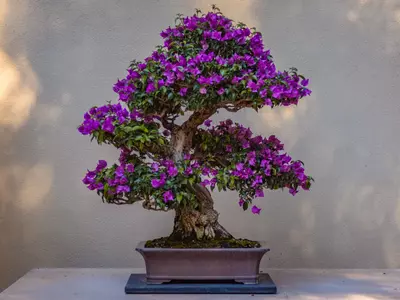How to Grow Flowering Crabapple Bonsai Tree

Growing a flowering crabapple bonsai tree can be a rewarding experience for any bonsai enthusiast. These beautiful trees are known for their showy blooms, colorful foliage, and striking bark. Here are some essential steps to help you grow a healthy and beautiful flowering crabapple bonsai tree.
Choosing the right tree:
 Unsplash
Unsplash
When selecting a flowering crabapple tree for bonsai, choose a young tree with a straight trunk and a well-shaped canopy. Look for a tree with healthy foliage and no signs of pests or diseases. Consider the variety of crabapple tree you want, as different varieties have different bloom times, foliage colors, and growth habits.
Choosing the right container and soil:
The container for your flowering crabapple bonsai tree should be deep enough to accommodate the long taproot of the tree. You can use a plastic or ceramic pot, and it should be slightly larger than the root ball of the plant. The soil should be well-draining and rich in organic matter. A mix of akadama, pumice, and lava rock is an excellent choice for flowering crabapple bonsai trees.
Pruning and shaping:
 Unsplash
Unsplash
Pruning is an essential aspect of bonsai care, and it helps to maintain the tree's shape and size. Regular pruning encourages new growth and improves the overall health of the tree. You can use a pair of sharp pruning shears to remove dead, diseased, or overgrown branches. It's essential to cut the branches at the right angle, close to the trunk or stem, to avoid leaving stubs. Flowering crabapple trees also respond well to shaping techniques like wiring.
Wiring:
Wiring is a technique used to shape bonsai trees. It involves wrapping a wire around the branches to bend them into the desired shape. Flowering crabapple bonsai trees are relatively flexible, making them easy to wire. However, you should be careful not to apply too much pressure, which can damage the branches.
Watering and fertilizing:
Flowering crabapple bonsai trees need regular watering to thrive. The frequency of watering will depend on the size of the tree, the type of soil, and the climate. You should avoid overwatering as it can cause root rot. Fertilizing is also crucial, and you can use a balanced fertilizer every two weeks during the growing season.
Repotting:
 Pixabay
Pixabay
Repotting is necessary when the tree outgrows its container or when the soil becomes compacted. You should repot your flowering crabapple bonsai tree every two to three years, depending on its growth rate. The best time to repot is in early spring before new growth begins.
Protecting against pests and diseases:
Flowering crabapple bonsai trees are susceptible to pests and diseases like aphids, spider mites, and apple scab. You should inspect your tree regularly for signs of infestation or disease. You can use neem oil or insecticidal soap to control these pests.
Spring and fall maintenance:
Spring is the best time to prune your flowering crabapple bonsai tree, as it encourages new growth and prepares the tree for the upcoming growing season. In the fall, you should remove any dead or diseased branches and clean up fallen leaves to prevent the spread of disease.
In conclusion, growing a flowering crabapple bonsai tree requires patience, care, and dedication. By following the essential steps outlined in this guide, you can create a beautiful and healthy bonsai tree that will bring you joy for years to come. With proper care and maintenance, your flowering crabapple bonsai tree will be a stunning addition to your bonsai collection.















